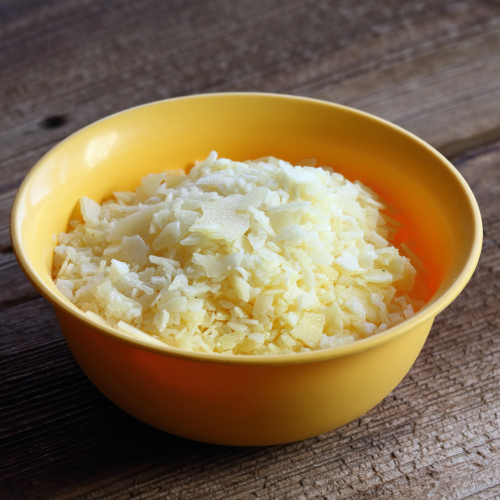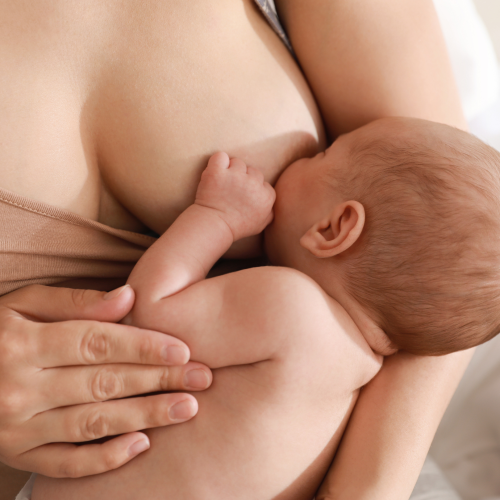Best cream for nipples when breastfeeding is by far something natural, pure and safe for mum and baby. Here we explore the reasons for nipple cream as well as what is the best solution for nipples when breastfeeding.
Why do nipples need cream when breastfeeding?
Nipple cream is often used by breastfeeding mothers to alleviate discomfort and promote healing, especially during the early stages of breastfeeding. Here are several reasons why nipples may benefit from the use of nipple cream:
- Preventing and Treating Dryness: Breastfeeding can sometimes lead to dryness and cracking of the nipples, particularly as the baby adjusts to latching properly. Nipple cream helps to moisturize the skin, preventing dryness and reducing the likelihood of developing cracks or fissures.
- Alleviating Soreness: It’s common for nipples to feel sore, tender, or even painful during the early days of breastfeeding, as both the mother and baby are learning how to nurse effectively. Nipple cream provides a protective barrier over the skin, helping to reduce friction and discomfort caused by repeated nursing sessions.
- Healing Cracked or Damaged Nipples: In some cases, breastfeeding may cause the nipples to become cracked, blistered, or even bleed. Nipple cream can help to promote healing by providing a moisturizing environment that encourages the skin to repair itself. The emollient properties of nipple cream also soothe irritation and inflammation, allowing the nipples to heal more quickly.
- Preventing Infection: Cracked or damaged nipples can increase the risk of bacterial or fungal infections, such as thrush. Nipple cream helps to keep the skin clean and protected, reducing the likelihood of infection and promoting a healthy breastfeeding relationship.
- Comfort and Confidence: Using nipple cream can offer breastfeeding mothers peace of mind, knowing that they are taking proactive steps to care for their nipples and ensure a more comfortable nursing experience. This can boost confidence and motivation, especially during the challenging early weeks of breastfeeding.
- Maintaining Breastfeeding Momentum: Discomfort or pain associated with breastfeeding can sometimes lead to reluctance or hesitation to continue nursing. Nipple cream can help to minimize discomfort, allowing mothers to continue breastfeeding without interruption and maintain their breastfeeding goals.

Nipple cream serves as a valuable tool for breastfeeding mothers, providing relief from discomfort, promoting healing, and supporting a positive breastfeeding experience for both mother and baby. However, it’s important to note that while nipple cream can be helpful, addressing any underlying issues with latch or positioning is essential for long-term breastfeeding success. If nipple pain or damage persists despite the use of the best cream for nipple when breastfeeding, seeking assistance from a lactation consultant is recommended.
What is the best cream for nipples when breastfeeding?
Pure lanolin is often considered the best cream for nipples when breastfeeding for several reasons, particularly for breastfeeding mothers. Here’s why:
- Preventing and Treating Dryness: Breastfeeding can sometimes lead to dryness and cracking of the nipples, particularly as the baby adjusts to latching properly. Nipple cream helps to moisturize the skin, preventing dryness and reducing the likelihood of developing cracks or fissures.
- Alleviating Soreness: It’s common for nipples to feel sore, tender, or even painful during the early days of breastfeeding, as both the mother and baby are learning how to nurse effectively. Nipple cream provides a protective barrier over the skin, helping to reduce friction and discomfort caused by repeated nursing sessions.
- Healing Cracked or Damaged Nipples: In some cases, breastfeeding may cause the nipples to become cracked, blistered, or even bleed. Nipple cream can help to promote healing by providing a moisturizing environment that encourages the skin to repair itself. The emollient properties of nipple cream also soothe irritation and inflammation, allowing the nipples to heal more quickly.

- Preventing Infection: Cracked or damaged nipples can increase the risk of bacterial or fungal infections, such as thrush. Nipple cream helps to keep the skin clean and protected, reducing the likelihood of infection and promoting a healthy breastfeeding relationship.
- Comfort and Confidence: Using nipple cream can offer breastfeeding mothers peace of mind, knowing that they are taking proactive steps to care for their nipples and ensure a more comfortable nursing experience. This can boost confidence and motivation, especially during the challenging early weeks of breastfeeding.
- Maintaining Breastfeeding Momentum: Discomfort or pain associated with breastfeeding can sometimes lead to reluctance or hesitation to continue nursing. Nipple cream can help to minimize discomfort, allowing mothers to continue breastfeeding without interruption and maintain their breastfeeding goals.
Brands that offer pure lanolin are: LANSINOH and MEDELA
In summary
Pure lanolin nipple cream is highly regarded for its natural moisturizing properties, safety, effectiveness, and versatility. It’s a trusted choice for breastfeeding mothers seeking relief from sore, cracked nipples, allowing them to continue their breastfeeding journey with greater comfort and confidence.




